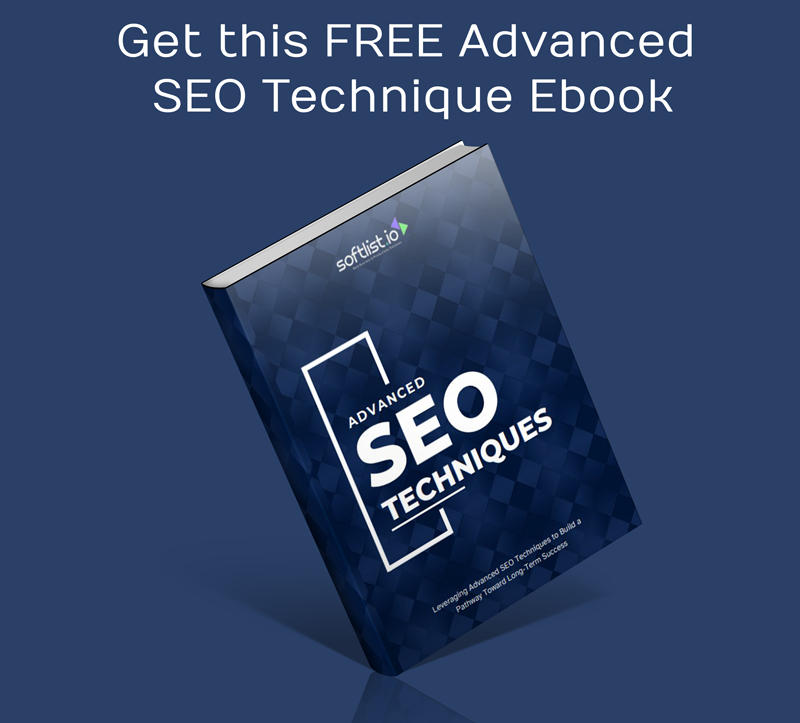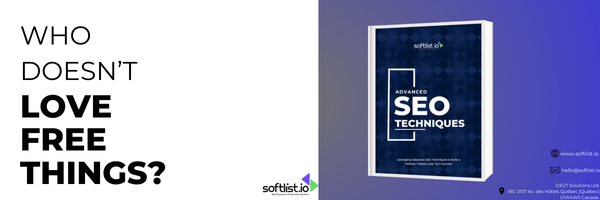Writing stuff that people can find on Google and actually want to read is hard. With so much out there, getting noticed is tough. Trying to make your writing good for Google can make it boring for readers. It’s hard to keep your writing fun and interesting while also fitting in keywords and following SEO rules.
Plus, Google keeps changing the rules, which makes it even more challenging. So, we’re going to talk about how to write SEO content in a way that’s good for Google and for your readers, without making your writing boring.
Up next, we’re diving into some practical tips and tricks. We’ll cover how to sprinkle those keywords in the article naturally, how to keep your readers engaged, and yes, how to stay ahead of those ever-changing Google algorithms without pulling your hair out. Ready to make your content shine? Let’s get started.
Why is Search Engine Optimization (SEO) Important?
Search Engine Optimization (SEO) is essential because it enhances a website’s visibility, which leads to more traffic and the opportunity to convert visitors into customers.
By optimizing your site to be more search-engine friendly, you can ensure it ranks higher in search engine results for relevant keywords and phrases. This not only improves engagement but also boosts your site’s credibility and authority.
In an increasingly competitive digital landscape, SEO is crucial for businesses and content creators looking to stand out and capture the attention of their target audience effectively.
What is SEO-friendly Content Writing?
SEO-friendly content writing is the process of creating written material that is both appealing to readers and optimized for search engines. This type of writing helps ensure that the content not only attracts more visitors through higher search rankings but also retains them with quality and relevance, thereby improving overall user experience and engagement.
Source: Canva Pro
Understand Your Audience and Their Search Intent
Before you type the first word, know who you’re writing for. Conduct audience research to understand the demographics, preferences, and pain points of your target readers. Equally important is grasping the search intent behind their queries. Are they looking for information, a specific website, a product to buy, or a local service? Tailoring your content to meet these intents is the first step toward SEO success.
Conduct Thorough Keyword Research
Keyword research is the cornerstone of SEO content writing. Tools like Google Keyword Planner, SEMrush, and Ahrefs can help you discover what your target audience is searching for, the language they use, and the type of content they prefer. Remember, the goal is to find keywords that are relevant to your content, have a reasonable search volume, and, if possible, low competition.
Understand the Power of Google Autofill
Google’s Autofill feature offers a manual yet insightful way to see what people are searching for. This can give you a quick glimpse into trending topics and frequently asked questions. However, for more comprehensive and scalable research, keyword research tools are recommended due to their depth of data and analytical capabilities.
Grasp the Search Intent
Search intent is categorized into four types:
- Informational: Users are looking for information.
- Navigational: Users are looking for a specific website or page.
- Transactional: Users are ready to buy or perform another specific online activity.
- Local: Users are looking for something nearby.
Understanding the intent behind keywords is crucial because it dictates the type of content you should create. For example, informational intent often calls for blog posts or articles, while transactional intent is better suited for product pages or service descriptions.
Use SEO Technology and Platforms
For those without access to dedicated SEO technology, there are still options available. Many platforms offer free versions or trials of their keyword research tools. seoClarity’s Research Grid, for example, provides insights into the intent behind specific queries and suggests content formats that could perform well in search results.
Review Top-Ranking Content for Insights
Analyzing content that ranks well for your target keywords can offer valuable insights into what Google deems high-quality and relevant for those queries. If top-ranking content primarily consists of blog posts for a certain keyword, it indicates that informational content is likely the way to go.
Craft a Compelling Content Brief or Outline
A well-thought-out content brief is your roadmap to creating structured, coherent, and engaging content. It should outline the primary keyword, secondary keywords, headings, subtopics, questions to answer, and any call-to-action (CTA) you intend to include. A good brief ensures consistency and direction, especially when collaborating with other writers or stakeholders.
Write Engaging and Informative Content
Source: Canva Pro
With your audience’s needs and search intent in mind, start crafting content that informs, entertains, or solves a problem. Your writing should be clear, concise, and jargon-free, making complex information accessible to all readers.
Incorporate your primary and secondary keywords naturally, ensuring they fit seamlessly into your text without compromising readability.
Select Topics That Provide Value
Identify Issues and Opportunities: Focus on topics that solve problems, enlighten, or entertain your audience. The goal is to add value, whether by answering a pressing question, offering a solution, or providing insights they can’t find elsewhere.
Actionable Tip: Use tools like AnswerThePublic or SEMrush to discover trending topics and questions in your niche.
Create Descriptive Titles
Make the First Impression Count: Your title is a promise to your readers; it should spark interest and suggest the value they’ll gain from reading your content. Think of your title as a doorway inviting them into a conversation.
Actionable Tip: Test multiple headlines using A/B testing tools or social media polls to see which resonates most with your target audience.
Engage With a Strong Intro
Hook Your Readers Immediately: The first few sentences of your content should grab attention and pull readers in. Start with a compelling fact, a relatable anecdote, or a provocative question to pique curiosity.
Actionable Tip: Practice writing your introduction last. This allows you to better align it with the core message and insights of your article.
Organize Content for Readability
Structure Your Content Thoughtfully: Break your content into digestible sections using headers, bullet points, and short paragraphs. This not only enhances readability but also helps search engines understand and rank your content.
Actionable Tip: Use tools like Hemingway or Grammarly to ensure your content is clear, concise, and free of jargon.
Enrich With Visuals and Examples
Visuals Enhance Engagement: Incorporate relevant images, videos, infographics, or charts to complement your text. Visuals can break up large blocks of text and illustrate concepts more effectively.
Actionable Tip: Create or source quality visuals that directly relate to the content you’re discussing. Use platforms like Canva or Unsplash for high-quality, free images and design tools.
Include a Call to Action (CTA)
Guide Your Readers: Every piece of content should have a purpose, whether it’s to encourage further reading, start a conversation, or convert leads. Your CTA should be clear, compelling, and relevant to the content.
Actionable Tip: Tailor your CTAs to the stage of the buyer’s journey your audience is likely in. Avoid generic phrases in favor of more specific, value-driven commands.
Optimize for On-Page SEO
On-page SEO involves optimizing individual web pages to rank higher in SERPs. This includes:
- Incorporate primary keywords in title tags, meta descriptions, headings, and throughout the content naturally.
- Use long-tail keywords for a more targeted audience reach.
- Keep meta titles under 60 characters and include the primary keyword.
- Limit meta descriptions to 160 characters, making them informative and engaging.
- Structure content with clear headings (H1, H2, H3) and include keywords relevantly.
- Ensure content readability using short paragraphs, bullet points, and varied sentence lengths.
- Optimize images with descriptive file names and alt text for SEO and accessibility.
- Implement internal linking to relevant pages within your website.
- Include authoritative external links when relevant.
- Ensure your website is mobile-friendly for better performance on mobile devices.
- Optimize page speed to improve user experience and SEO rankings.
Include Engaging Elements
To stand out, your content must be more than just text. Include images, videos, infographics, and other multimedia elements to break up text, illustrate points, and improve user engagement. Visuals are not only appealing but also help in explaining complex information.
Use Schema Markup
Schema markup is a powerful tool for telling search engines exactly what your content is about, helping it rank better for the intended queries. Implementing schema for articles, FAQs, and reviews can enhance your visibility in SERPs with rich snippets, significantly improving click-through rates.
Monitor Performance and Update Content Regularly
SEO is not a set-it-and-forget-it task. Once your content is live, monitor its performance using tools like Google Analytics and Search Console. See how your content ranks for the targeted keywords, and don’t hesitate to update your content to keep it relevant and improve its ranking.
Source: Canva Pro
SEO writing vs. Copywriting
SEO writing is about making your content visible on search engines like Google. It involves using keywords so that when people search for something related to your content, they can find it easily. The goal is to get more people to visit your website by appearing higher in search results.
Copywriting, on the other hand, is about convincing people to take an action, like buying a product or subscribing to a newsletter. It uses persuasive language to make people want to do something after reading.
In short, SEO writing helps people find your content, while copywriting encourages them to do something once they’ve found it.
Final Thoughts
Writing content that both shows up in searches and grabs your audience isn’t easy, but it’s definitely possible. We’ve looked at how to mix the right keywords with interesting writing to get the best of both worlds. The main thing to remember is to keep your readers in mind. You want to make sure they find your stuff and love reading it.
SEO doesn’t have to be a headache. The right tools can actually help you make your writing stand out more. Want to know how to make SEO work for you, not against you? Check out our article on SEO Tools. It’s packed with tips and tools that can help you write content that’s not just easy to find but also fun to read.
Frequently Asked Questions
How can I measure the success of my SEO content?
Analytics tools like Google Analytics track metrics such as page views, bounce rate, time on site, and rankings. This data can help you understand how well your content is performing and where improvements can be made.
How do I write an effective meta description for SEO content?
An effective meta description should concisely summarize the content of your page in about 150-160 characters. It’s your opportunity to advertise the content to readers in search engine results. Include your primary keyword naturally, address the reader’s intent, and use a compelling call-to-action (CTA) to encourage clicks.
Why is SEO important for my content?
SEO helps your content get seen by more people. When your content ranks higher in search results, it’s more likely to be clicked on. This means more readers, more engagement, and potentially more conversions or followers.
How often should I use keywords in my content?
It’s not just about the number of times you use a keyword but where and how you use them. Aim for a natural flow in your writing. Overusing keywords can make your content hard to read and might hurt your SEO.
How do I know if my SEO content is successful?
Use tools like Google Analytics to track your content’s performance. Look at metrics like page views, time on page, bounce rate, and rankings in search results to gauge success.








